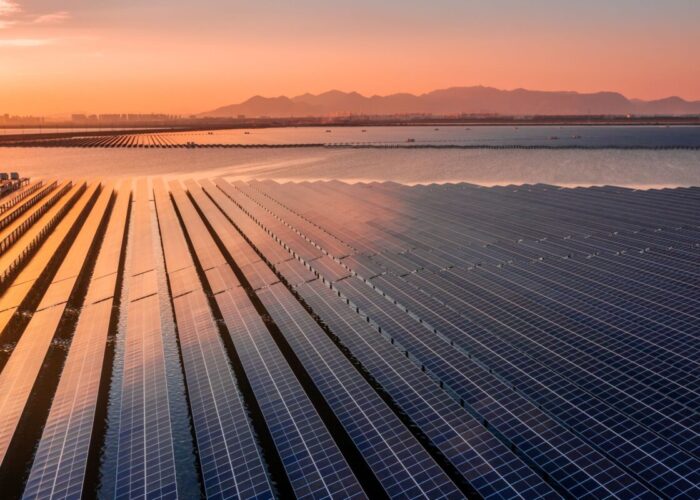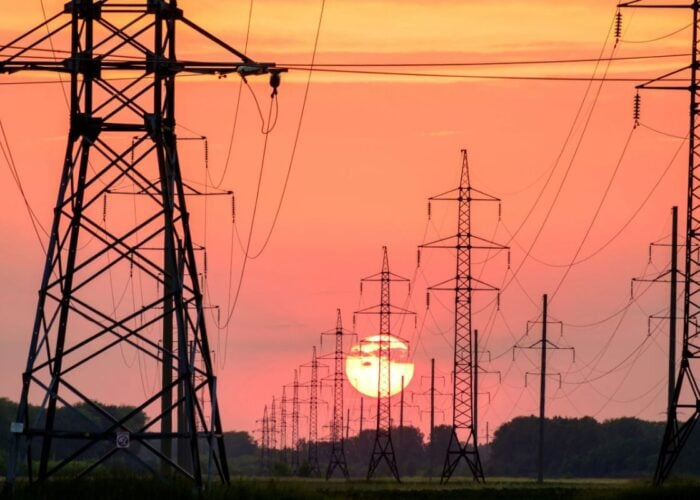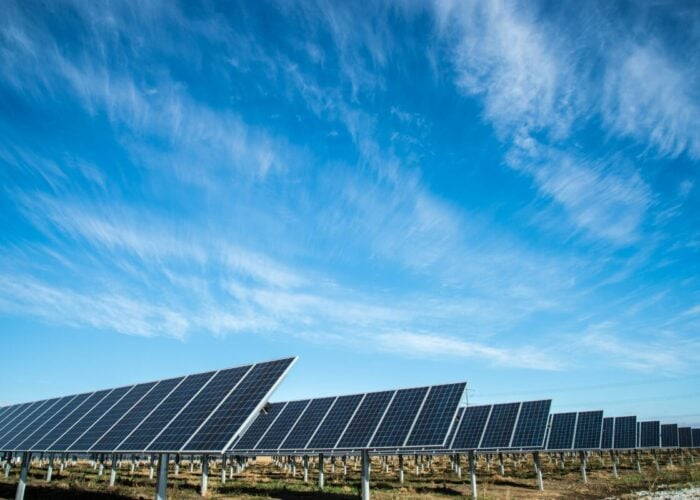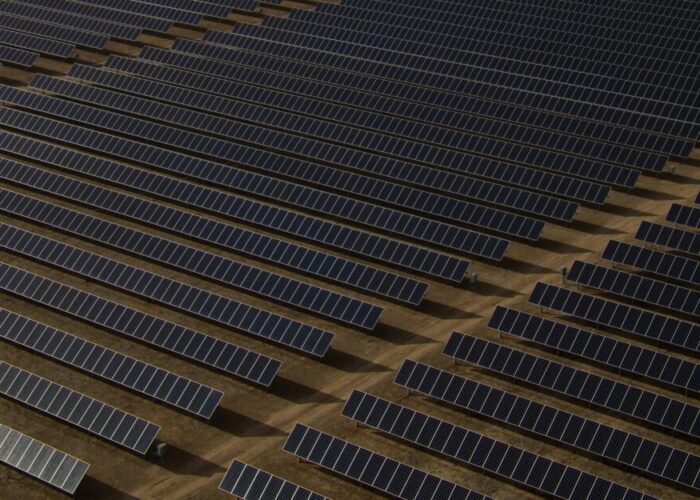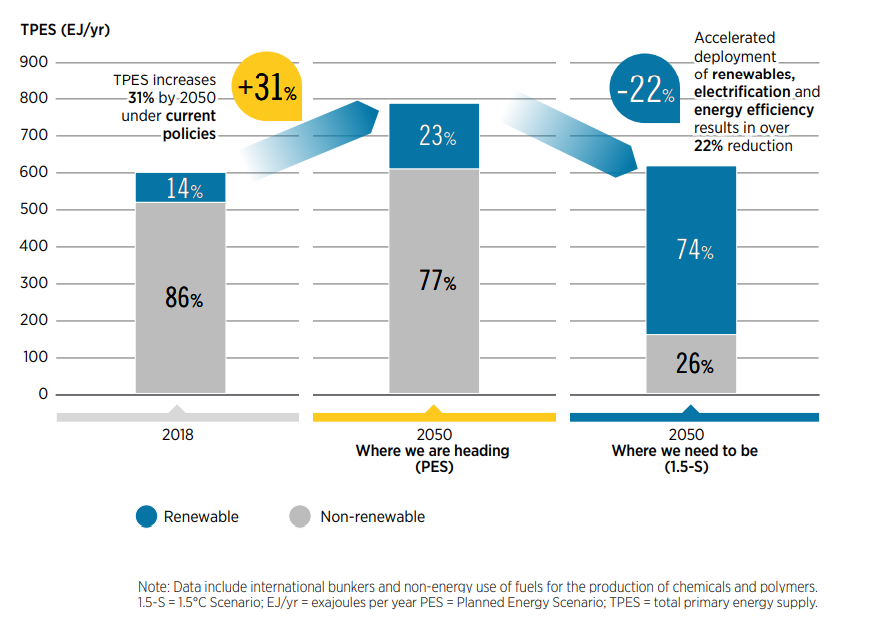
The world’s solar power generation capacity will have to reach 14.4TW in the next 30 years to ensure that the global temperature does not rise above 1.5 degrees celsius this century.
That’s according to a new report from the International Renewable Energy Agency, which said that renewable energy, and solar energy in particular, will be connected with 90% of the actions global markets need to take to align with the Paris Agreement.
Unlock unlimited access for 12 whole months of distinctive global analysis
Photovoltaics International is now included.
- Regular insight and analysis of the industry’s biggest developments
- In-depth interviews with the industry’s leading figures
- Unlimited digital access to the PV Tech Power journal catalogue
- Unlimited digital access to the Photovoltaics International journal catalogue
- Access to more than 1,000 technical papers
- Discounts on Solar Media’s portfolio of events, in-person and virtual
The report said that the current rate of renewable energy deployment is “far behind what is needed” to reach net-zero emissions.
It estimates that some 840GW of new renewable energy capacity will need to be added each year to reach 27.7TW by 2050, and that the world would need to see an annual US$237 billion investment in the solar sector between now and then to cap the temperature rise at 1.5C. In its projections, IRENA said that solar deployment would “lead the way”, reaching more than 14TW by the end of the half century, compared to 8.1TW for onshore and offshore wind.
The share of renewables in the global energy mix, it said, must grow to 74% within the next 30 years in order to achieve that target, necessitating an “eightfold increase” in annual deployment growth, and must account for 90% of electricity generation.
Around 30% of electricity generated by the 27.7TW of new clean energy would be used to create green hydrogen, IRENA stated, with its production requiring 21TWh of electricity by 2050. This in turn will need the world’s electrolyzer capacity deployment to ramp up to around 160GW annually by that time.
Scores of governments have set ambitious renewables deployment targets in the past two years, all with the aim on reaching carbon neutrality this century. Iraq made its first steps towards installing 700MW of PV plants last month in a bid to reach 10GW of solar by 2030, while the US had a record-breaking year of solar installs in 2020 as the industry recovered from COVID-19 disruptions, and Taiwan’s government aims to install 20GW of non-hydro capacity in 10 years to offset coal plant shutdowns.
However others have shied away from such policies. Mexico’s government, for example has put forward a bill that campaigners say will curtail the transition to clean energy in favour of state-owned utilities. Meanwhile, according to an earlier report from IRENA, there remains “vast untapped potential” in parts of the world such as central and southeastern Europe that have “excellent resource conditions” to develop a thriving solar market.
Francesco La Camera, IRENA’s director general, said that although there have been great strides taken in global efforts to deploy more clean energy capacity and move away from fossil fuels, evidence suggests that greenhouse gas emissions could actually rise by 27% over the coming three years if current government policies are fully implemented and, even then, they may only stabilise their production with a small decline by 2050.
Recent figures, he said, show that “the gap between where we are and where we should be is not decreasing but widening. We are heading in the wrong direction.”
The report noted that close to 30 countries are already on track to achieve net-zero emissions in the coming decades, but a global push to reduce non-renewable power generation and boost renewables capacity is needed to cap the global temperature rise at 1.5C.
The energy sector, it said, is responsible for 80% of global carbon emissions, and “has a central role in delivering the decarbonisation required.”


